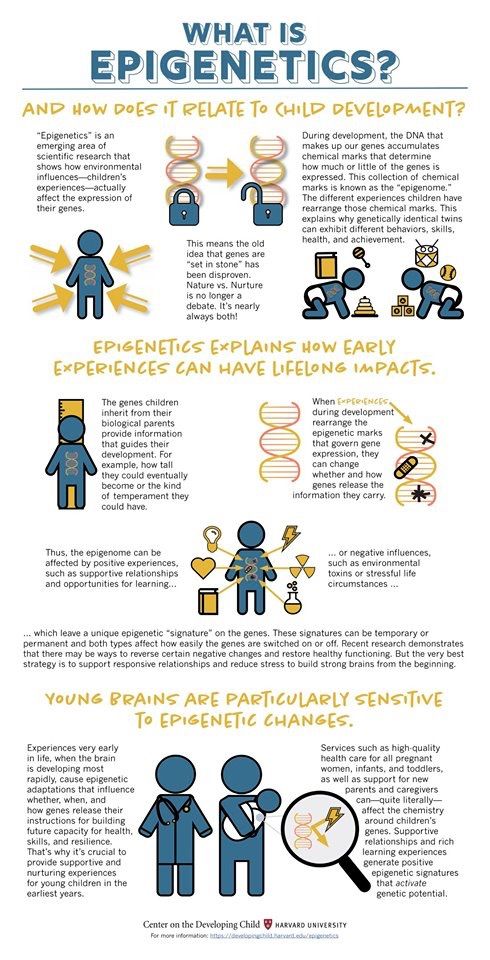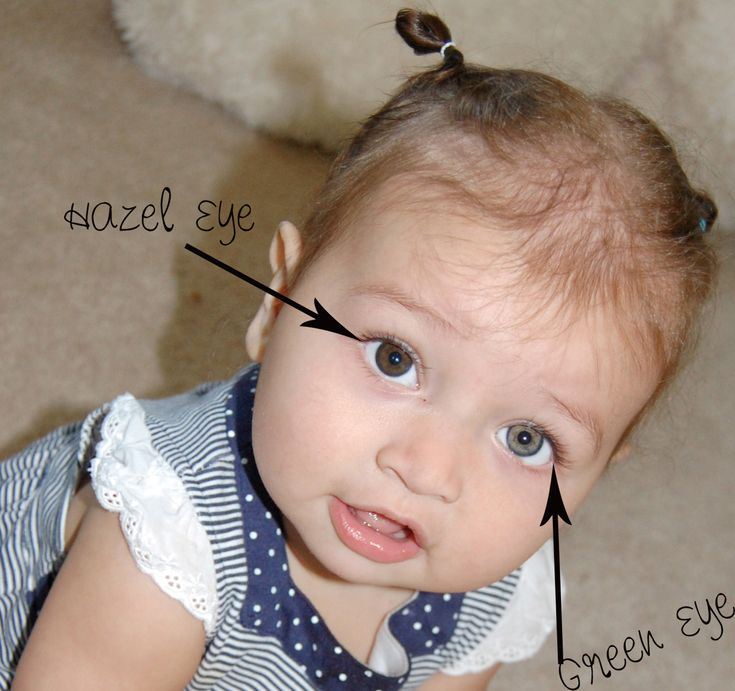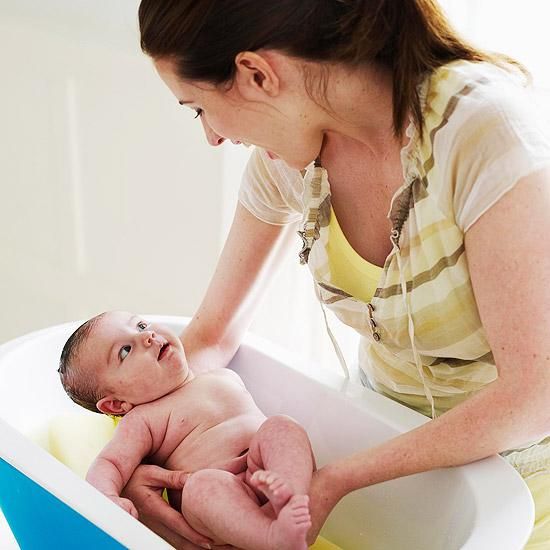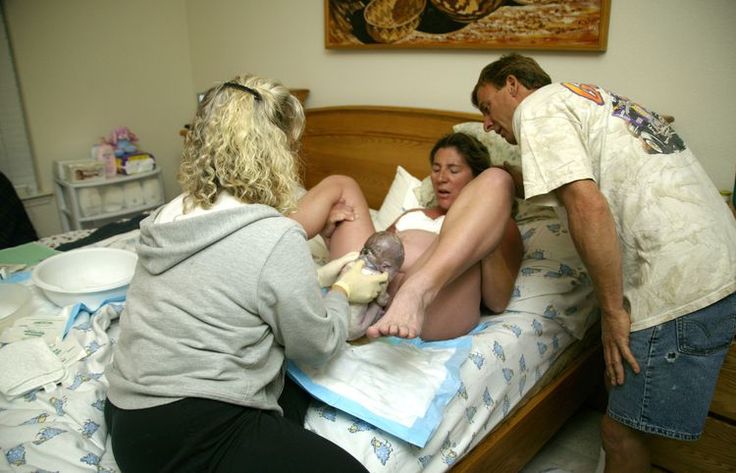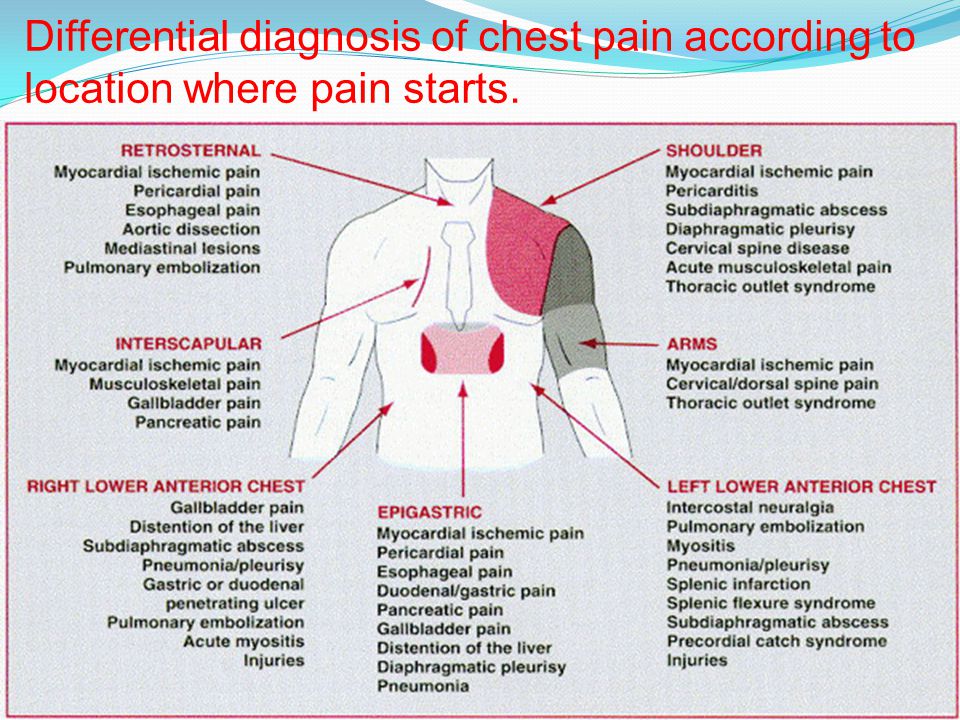Identical twins types
Identical, Fraternal, and Other Unique Types
You may be familiar with the most common types of twins — fraternal and identical — but several other rare subtypes exist too.
More twins are born than you might think. As of 2019, the Centers for Disease Control and Prevention (CDC) reported that 32.1 out of every 1,000 births in the United States were twins. Read on for more details about twins.
The National Library of Medicine says that monozygotic, or identical, twins are conceived from one fertilized egg. This egg separates into two embryos after it has begun to divide. These two embryos develop into two babies.
Genetic materials called chromosomes in both babies are completely identical. This is because both babies come from the same egg and sperm. For this reason, both children are assigned the same sex at birth and share the same genetic characteristics, such as eye and hair color.
Still, because of differences in the environment where they’re born (like the amount of space each had in the uterus), identical twins may have slight differences in appearance.
Not all twins are identical, of course. More often than not, twins are born with unique physical characteristics. Nonidentical twins are generally known as fraternal twins.
Fraternal twins
The scientific term for fraternal twins — “dizygotic” — refers to two fertilized eggs. Dizygotic twins happen when the birthing parent’s body releases two eggs at the same time. A different sperm will fertilize each egg.
Since fraternal twins are the result of different eggs and different sperm, they share the same percentage of chromosomes as any other siblings. The National Human Genome Research Institute says that this is about 50 percent. This is why they don’t look exactly alike and can be assigned different sexes at birth.
Traditionally, the science around twins has taught that identical and fraternal are the only two types. But a third type might exist, called polar body or half-identical twins.
Though this has never been confirmed, a research review from 2016 suggested that a third twin type would explain why some fraternal twins look so similar.
After the ovaries release an egg, the egg can split into two halves, the smaller of which is called a polar body. This polar body contains all the chromosomes necessary to join with a sperm to create a baby. But since it usually contains very little fluid, or cytoplasm, it’s often too small to survive.
It’s possible, though, that a polar body could survive and be fertilized. Meanwhile, the larger half of the original egg could also be fertilized by a separate sperm. The result? Polar twins.
Polar twins share the same chromosomes from their birthing parent, but they get different chromosomes from their non-birthing parent. This is because they’re created from a single egg but two separate sperm.
For this reason, they may or may not be assigned the same sex at birth, and they may look very similar but not exactly identical.
In a basic twin pregnancy, two embryos go their separate ways and develop into twin babies, whether identical or fraternal. Some unique sets of twins follow a different path.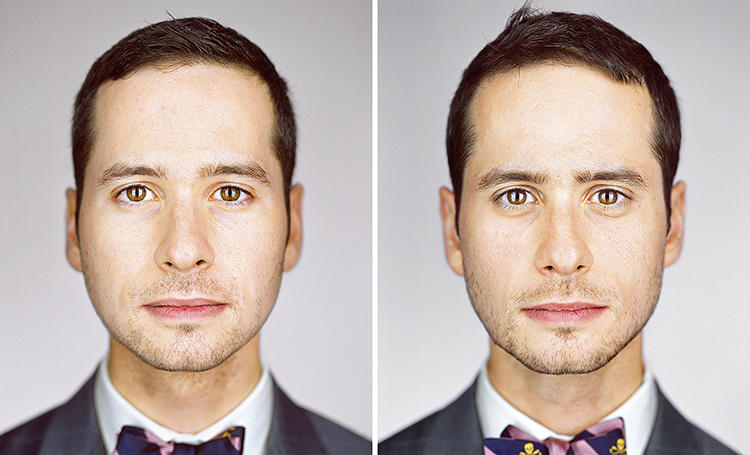
Mirror twins
Mirror twins are exactly what they sound like! These twins are actual mirror images of each other. This means that:
- Their hair may naturally fall in opposite directions.
- Their teeth may grow in on opposite sides of their mouths.
- They may have birthmarks on the opposite side of their bodies.
- They also usually have different dominant hands.
What causes this phenomenon? In a typical identical twin pregnancy, an egg splits during its first week after fertilization. But in a mirror twin pregnancy, the egg splits 7 to 12 days after it’s been fertilized — long enough for the egg to have developed a right and a left side.
Conjoined twins
Conjoined twins are a rare twin type in which the two siblings are physically connected. Typically, conjoined twins are joined together at the chest or abdomen, but this varies. Some conjoined twins are connected to a greater extent than others. Most share at least one vital organ.
Though physically attached to each other, conjoined twins are two individuals. They have unique thoughts and their own personalities.
Researchers are still trying to understand the origins of this type of twin birth. Some experts believe conjoined twins occur when a fertilized egg doesn’t split completely. This happens when the egg divides 12 or more days after conception. Another theory is that the fertilized egg divides completely, but it later fuses back together.
A conjoined twin pregnancy is high-risk, but breakthroughs in surgery have been able to improve outcomes. Surgery can even allow conjoined twins to live independently. Although a small 2011 study found that just 7.5 percent of conjoined twins live past birth, advances in care for conjoined twins are being made every year.
Parasitic twins
Sometimes, as twins develop in utero, one twin becomes larger and more dominant. The other twin stops developing and begins to depend on their sibling. Known as parasitic twins, these twins are physically conjoined.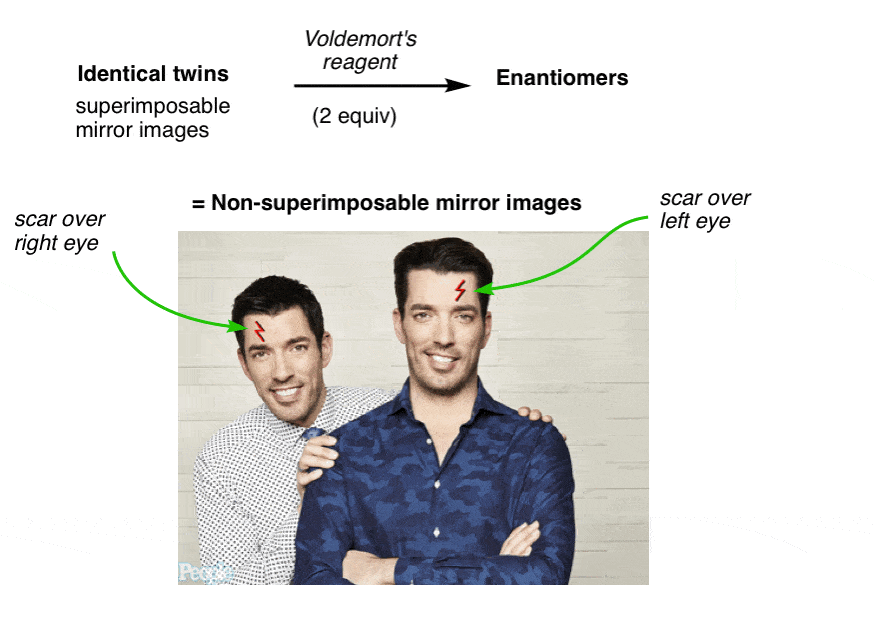
However, the smaller twin is not fully formed and isn’t capable of surviving on their own. This is because the smaller twin is usually missing vital organs or a fully developed brain or heart.
In fact, you might not even recognize the smaller twin as a separate individual. This “twin” may appear on the sibling’s body as a small lump, extra limbs, or a second non-functioning head.
Parasitic twins may be classified into subtypes, including fetus in fetu and acardiac twins:
- Fetus in fetu. These are rare circumstances when a smaller twin develops inside the larger twin’s body.
- Acardiac twins. In this case, one twin receives too much blood flow while the other doesn’t receive enough. This occurs because identical twins share a placenta.
A milder version of this is called twin to twin transfusion syndrome (TTTS). Acardiac twins experience a more extreme form of TTTS that may result in developmental issues for the fetuses. Treatments like surgery can improve outcomes, according to 2015 research.
Treatments like surgery can improve outcomes, according to 2015 research.
Semi-identical twins
There have only been two reported cases of semi-identical twins, so this type is extremely rare.
In semi-identical twins, two separate sperm fertilize one egg. The fertilized egg then splits in two. So, semi-identical twins share all the same chromosomes from their birthing parent, but only about 50 percent from their non-birthing parent.
Female and male identical twins
Sometimes identical twins can be assigned the sex of male and female at birth. These twins start off as identical males with XY sex chromosomes. But shortly after the egg divides, a genetic mutation called Turner syndrome occurs, leaving one twin with the chromosomes X0.
This twin will be assigned female at birth but may have developmental issues, as well as difficulties with fertility later in life, according to the National Health Service. The mutation doesn’t affect the other twin, who is assigned male at birth.
Twins with different ages
Once a person becomes pregnant, their body stops releasing new eggs for potential fertilization — except in some rare cases.
A phenomenon known as superfetation can occur when a second egg gets released and fertilized after a person is already pregnant. When this happens twice within one menstrual cycle, it’s known as superfecundation.
In this case, both fertilized eggs will develop, but one twin will be slightly older than the other.
Twins with different fathers
If two eggs are released within a single menstrual cycle, it’s possible for them to be fertilized by sperm from two different people.
This is known as heteropaternal superfecundation — a common occurrence in animals but very rare in people.
Twins with different skin colors
It’s very unlikely to have twins with different skin tones, but it can happen in three different ways:
- When parents are of different complexions, one of their fraternal twins may naturally resemble one parent, while the other twin looks more like the other parent.
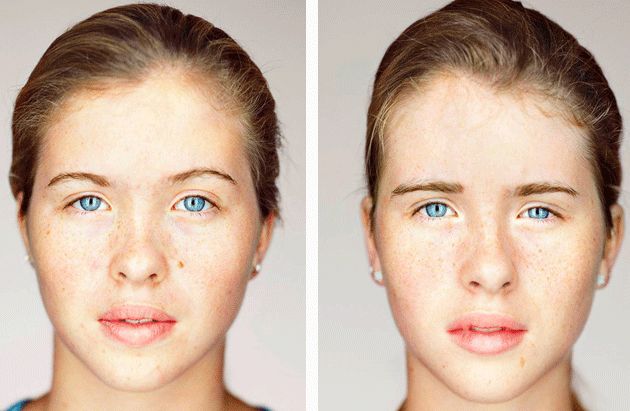
- In the rare case of heteropaternal superfecundation, the two non-birthing parents may have different skin tones. Each twin would then receive that person’s genetics.
- When both parents are biracial, this usually results in twins that both look biracial. Occasionally, though, each twin may receive more genetic material from different ancestors than the other. This can lead to the twins appearing to be from different “races.”
Twin pregnancies often come with an increased risk of developing some medical conditions. These can include:
- Placenta previa. In placenta previa, the placenta sits too low in the uterus, covering the cervix.
- Placental abruption. With placental abruption, the placenta detaches from the uterine wall, causing bleeding, back pain, and abdominal tenderness.
- Placenta accreta. The placenta attaches too deeply into the uterine wall when placenta accreta occurs.
- Prematurity.
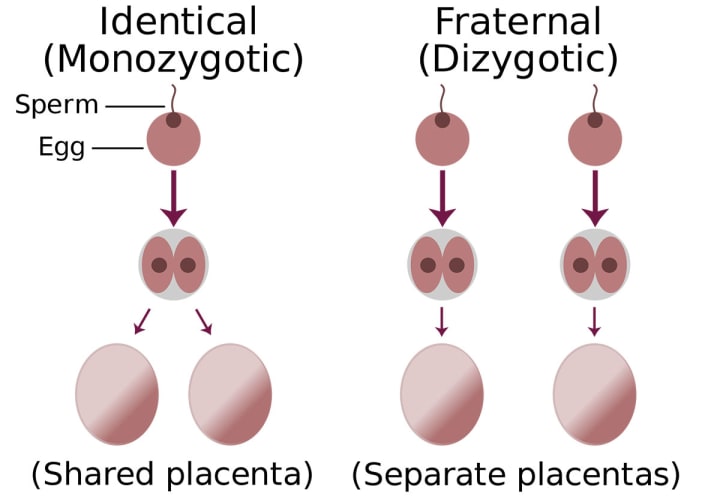 A premature baby is one who is born before 37 weeks of pregnancy.
A premature baby is one who is born before 37 weeks of pregnancy. - Low birth weight. A baby with low birth weight is born with a weight that’s less than 5 pounds and 8 ounces.
- Gestational diabetes. In gestational diabetes, the birthing parent’s blood sugar is too high during pregnancy.
- Gestational hypertension. In gestational hypertension, the birthing parent’s blood pressure is too high during pregnancy.
- Postpartum hemorrhage. When a postpartum hemorrhage occurs, the birthing parent experiences heavy bleeding after delivery, often because of an undelivered placenta or the uterus not contracting properly.
Most twins are fraternal or identical, but a third type, polar body twins, might exist too.
Some other subtypes exist, but these are extremely rare. Many occur under unusual circumstances.
A twin pregnancy has risks of complications, so parents should make sure to receive good prenatal care and seek medical attention for any concerns.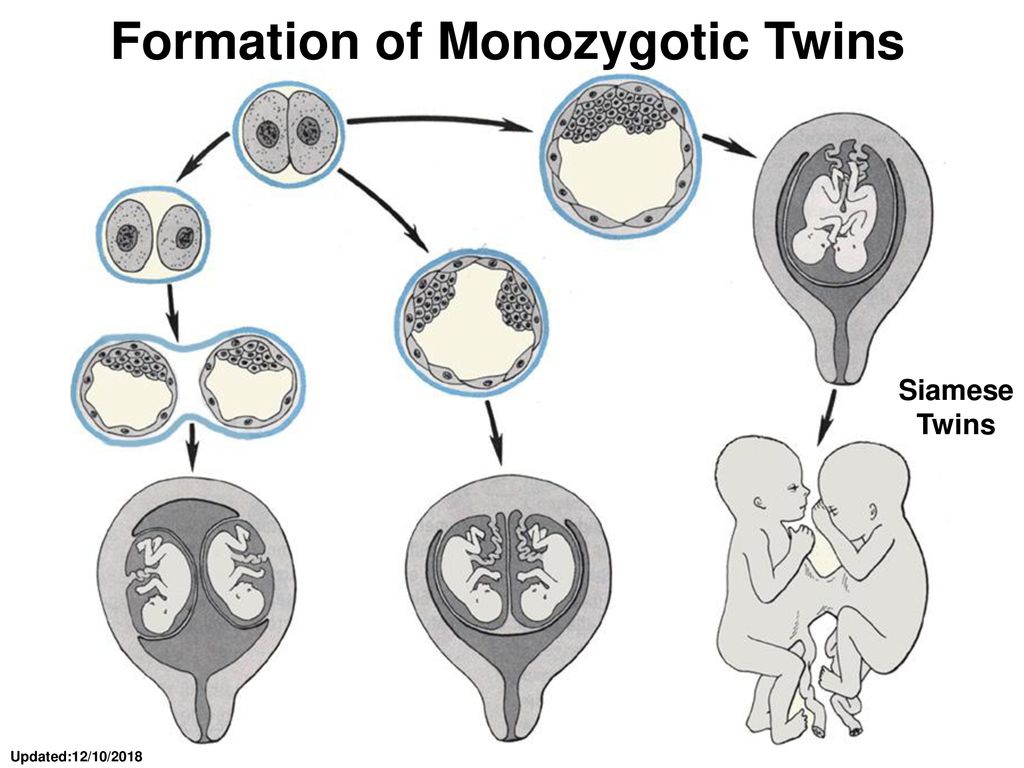
Types of twins | Pregnancy Birth and Baby
beginning of content2-minute read
Listen
There are two types of twins - fraternal twins and identical twins. Find out more about the difference between the two types and twin-twin transfusion syndrome.
Fraternal twins
Fraternal twins are formed from the fertilisation of two eggs by two different sperm. They are also known as 'dizygotic twins', or 'non-identical twins'.
With fraternal twins, the two foetuses (developing babies) each have a separate placenta, inner membrane (the amnion) and outer membrane (the chorion). They don't usually look identical and might or might not be the same sex.
Identical twins
Identical twins are formed from the splitting of one embryo. They are also known as 'monozygotic twins'.
There are different types of identical twins, depending on what they share in the womb.
- Almost one third of identical twins have their own placenta, inner membrane, and outer membrane. The medical term for these twins is ‘dichorionic diamniotic’ or DCDA twins.
- Almost two-thirds of identical twins share the same placenta and chorion, but have their own amnion. These are ‘monochorionic diamniotic’ or MCDA twins.
- The rest — only about 4% of identical twins — share everything, and are called ‘monochorionic monoamniotic’ (MCMA) twins.
Although identical twins are the same sex and are genetically identical, they can develop quite different personalities. You can find a good description of the different types of monozygotic twins, with pictures, at the Twins Research Australia.
If you have triplets or more, the principles are similar.
Twin-twin transfusion syndrome
Identical twins who share the same placenta and chorion can sometimes share a condition called twin–twin transfusion syndrome (TTTS). In this condition, blood flows from one twin to the other, resulting in one baby getting too much blood and the other baby not getting enough. This affects the health of both babies, sometimes severely.
In this condition, blood flows from one twin to the other, resulting in one baby getting too much blood and the other baby not getting enough. This affects the health of both babies, sometimes severely.
Most identical twins don’t get TTTS. But if they do, it is more likely to happen to MCDA twins than to MCMA twins.
If your twins have TTTS, there are many different ways to treat it - ask your doctor for advice.
More information
Find more information about twins at the Twins Research Australia and the Australian Multiple Birth Association.
Sources:
Cochrane Library (Planned caesarean section for women with a twin pregnancy), Cochrane Library (Regimens of ultrasound surveillance for twin pregnancies for improving outcomes), Cochrane Library (Interventions for the treatment of twin-twin transfusion syndrome), Twins Research Australia (Types of twins)Learn more here about the development and quality assurance of healthdirect content.
Last reviewed: October 2020
Back To Top
Related pages
- Preschool and twins
- Raising twins
- Giving birth to twins
- Pregnant with twins
This information is for your general information and use only and is not intended to be used as medical advice and should not be used to diagnose, treat, cure or prevent any medical condition, nor should it be used for therapeutic purposes.
The information is not a substitute for independent professional advice and should not be used as an alternative to professional health care. If you have a particular medical problem, please consult a healthcare professional.
Except as permitted under the Copyright Act 1968, this publication or any part of it may not be reproduced, altered, adapted, stored and/or distributed in any form or by any means without the prior written permission of Healthdirect Australia.
Support this browser is being discontinued for Pregnancy, Birth and Baby
Support for this browser is being discontinued for this site
- Internet Explorer 11 and lower
We currently support Microsoft Edge, Chrome, Firefox and Safari. For more information, please visit the links below:
- Chrome by Google
- Firefox by Mozilla
- Microsoft Edge
- Safari by Apple
You are welcome to continue browsing this site with this browser. Some features, tools or interaction may not work correctly.
Independent examination of twins. Price. Examples.
Twins are children of one mother, developing during one pregnancy and born as a result of one birth almost simultaneously. There are two main types of twins: homozygous twins (or identical) and heterozygous twins (twins, "twins").
Single-zygote twins are formed from one egg fertilized by one sperm.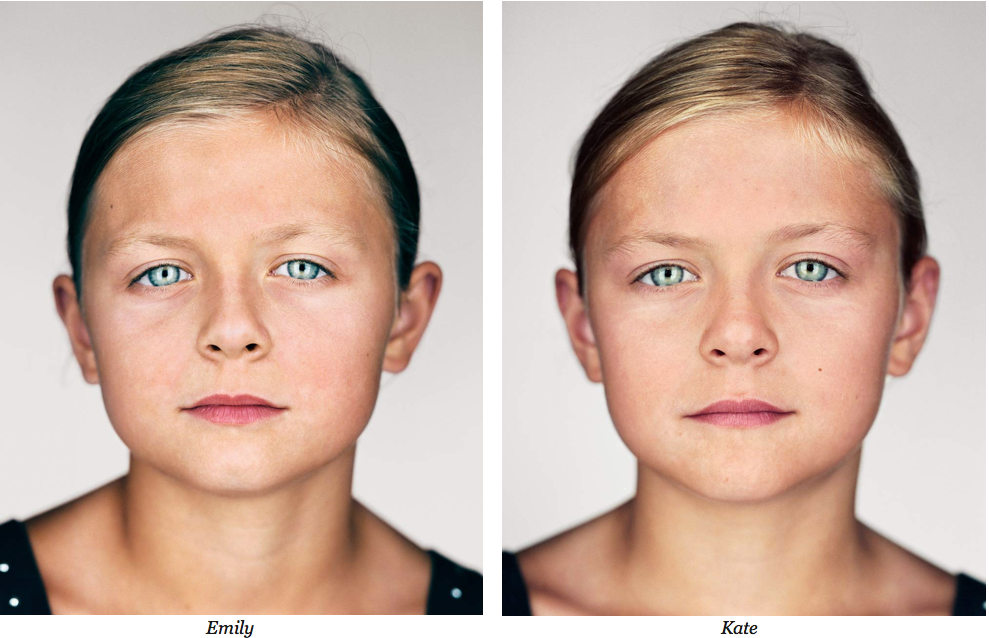 The fertilized egg divides, and each daughter cell gives rise to a separate organism. Identical twins are always of the same sex and are genetically nearly identical.
The fertilized egg divides, and each daughter cell gives rise to a separate organism. Identical twins are always of the same sex and are genetically nearly identical.
Twins develop when two eggs are fertilized by two sperm. Naturally, two-zygotic twins have different genotypes. They are no more similar to each other than brothers and sisters, and have about 50% identical genes. Fraternal twins can be of the same or different sexes and will have significant differences in DNA structure.
Both identical and fraternal twins are not only twins, but also triplets, quadruplets, and so on up to 9children.
There are several ways to determine whether identical or fraternal twins are born. Let's briefly list them:
- gender of children. If the children born are bisexual, then in any case they are fraternal twins;
- number of egg shells. The earlier the division of the zygote began, the higher the likelihood that each embryo will receive its own living space.
 Each embryo will have its own chorion and its own fruit sac. This indicates that the twins are fraternal;
Each embryo will have its own chorion and its own fruit sac. This indicates that the twins are fraternal; - the presence of a third circulatory system - these are thin connecting capillaries between the blood vessels of both fetuses. This sign is inherent in identical twins;
- comparison of newborn blood groups. In identical twins, the blood type and other specific blood factors are absolutely identical to each other.
The disadvantage of all these types of diagnostics (except sex determination), as many years of experience has shown, is the inability to accurately differentiate fraternal from identical twins. For example, in the case of fraternal twins, fusion of the egg membranes sometimes occurs, and a third circulatory system is often found in fraternal twins. To date, the most reliable way to determine fraternal or identical twins is the genetic examination of the twins.
So, the genetic examination of twins is a test to determine whether the twins are identical or dizygotic.
If the born twins are of different sexes, then it becomes obvious that the twins are fraternal, since there are no identical twins of different sexes. On the other hand, if the twins born are of the same sex (for example, two boys or two girls), then the question arises whether the twins are identical or dizygotic. To determine this accurately, a genetic examination of the twins is carried out.
To pass such an examination, you need to submit the biological material necessary for the study. As a rule, during the genetic examination of twins, swabs of the buccal epithelium are taken from the twins (scraping with a cotton swab from the inside of the cheek). This is the simplest and absolutely painless procedure, which takes about 1 minute and does not require the presence of a medical professional.
How is it established that the obtained biological material belongs to identical or fraternal twins? In genetic expertise, various systems of genetic markers have been developed to identify the individualizing characteristics of an organism. In particular, four systems are distinguished: 1) autosomal polymorphic loci; 2) polymorphic loci of the Y chromosome; 3) polymorphic loci of the X chromosome; 4) nucleotide profile of mitochondrial DNA (mtDNA).
In particular, four systems are distinguished: 1) autosomal polymorphic loci; 2) polymorphic loci of the Y chromosome; 3) polymorphic loci of the X chromosome; 4) nucleotide profile of mitochondrial DNA (mtDNA).
Which of these systems are suitable for differentiating identical and fraternal twins?
- mtDNA is passed on from a mother to all her children, therefore, both identical and fraternal twins will always have the same mtDNA. Therefore, this type of genetic marker is not suitable for differentiating twins;
- polymorphic loci of Y chromosomes. The Y chromosome is the sex chromosome that determines the male sex of an organism (Figure 1). As already mentioned, if children of opposite sexes are born, then they are always fraternal twins. But is it possible to identify those born from unizygotic boys by the Y-chromosome? Due to the fact that, firstly, the Y chromosome is transmitted only from father to son, and secondly, in the process of sexual cell division it does not exchange homologous DNA regions (since it does not have a pair), the Y chromosome is transmitted to both children exactly the same.
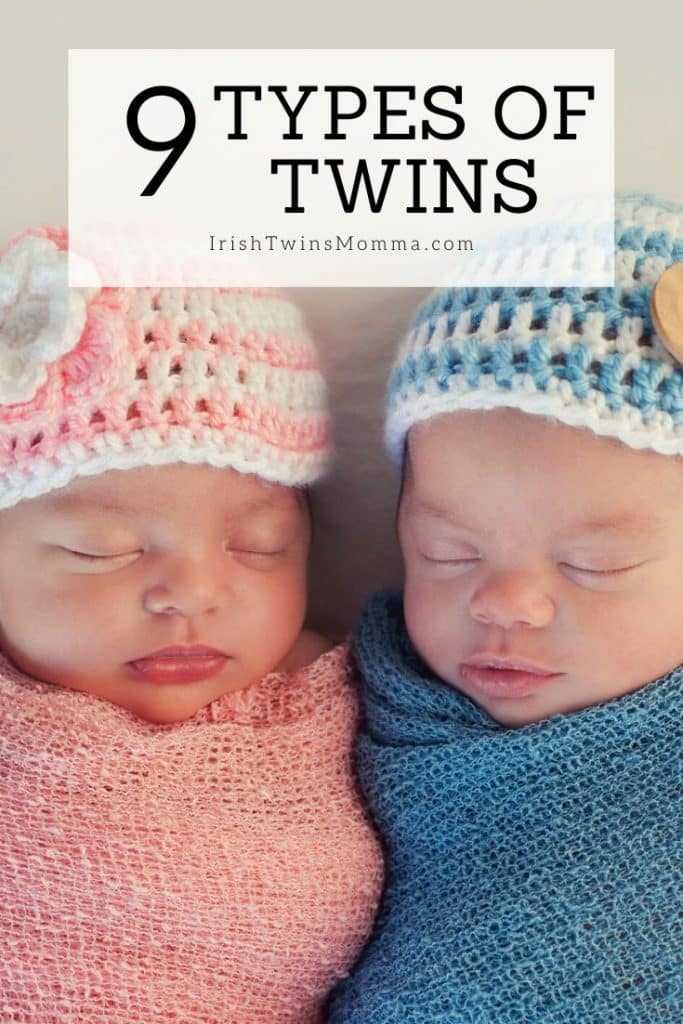 Therefore, it is impossible to differentiate single and dizygotic twins according to the Y chromosome;
Therefore, it is impossible to differentiate single and dizygotic twins according to the Y chromosome; - polymorphic loci of the X chromosome. The X chromosome is the sex chromosome that determines the female sex of an organism. Female cells have two X chromosomes, while male cells have only one. The X chromosome is inherited from both the father and the mother (Figure 1). According to the X chromosome of the father, it is impossible to differentiate single and dizygotic girls, due to the fact that during the process of sexual division of male cells there is no exchange of homologous DNA sections in the X chromosome (since it does not have a pair), and the X chromosome is inherited by children exactly the same. On the other hand, the mother's two X chromosomes recombine with each other through the process of sexual cell division, and, in the case of fraternal twins, the site exchange process can be found in the maternal X chromosomes. In practice, this type of analysis is not used, firstly, because it is necessary to study a large number of genetic markers of the X chromosome, and secondly, there is a simpler method of differentiation based on the analysis of autosomal polymorphic loci;
Figure 1.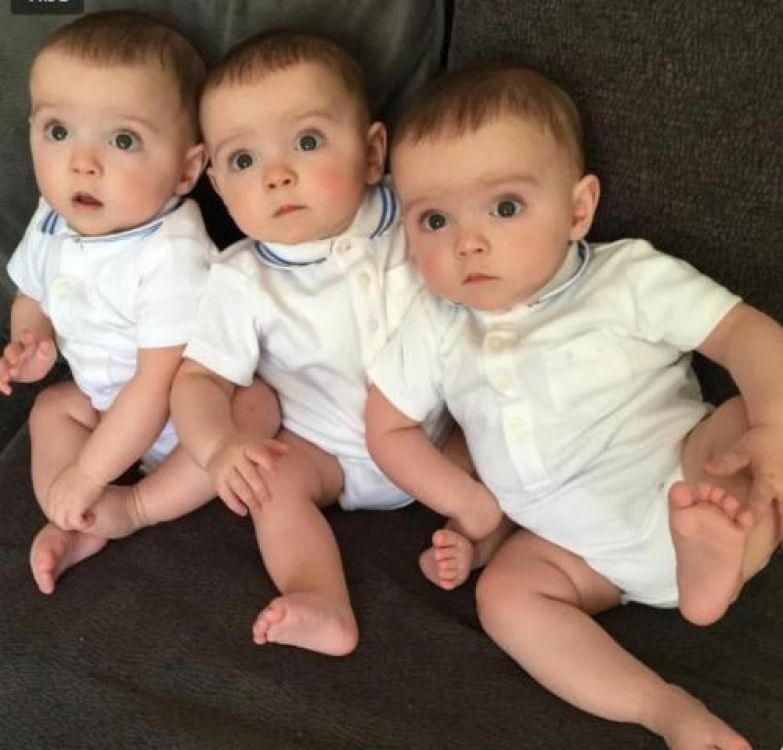 Transfer of sex chromosomes from parents to identical and dizygotic children. Different colors depict different loci.
Transfer of sex chromosomes from parents to identical and dizygotic children. Different colors depict different loci.
Table 1. Identical and fraternal twins have a number of features that distinguish them both from others and from each other.
| Feature of interest | Identical twins | Fraternal twins |
|---|---|---|
| Sperm count | One | Two |
| Number of eggs involved | One | Two |
| Floor | Boys only or girls only | Boys, girls and a boy with a girl can be born |
| Autosomal polymorphic loci | Identical for twins | Different in twins |
| mtDNA nucleotide profile | Same copies of mtDNA in both twins | Same copies of mtDNA in both twins |
| Y chromosome polymorphic loci | Identical for twins | Identical for twins |
| X-chromosome polymorphic loci | Identical for twins | Different maternal X chromosomes in twins |
- autosomal polymorphic loci.
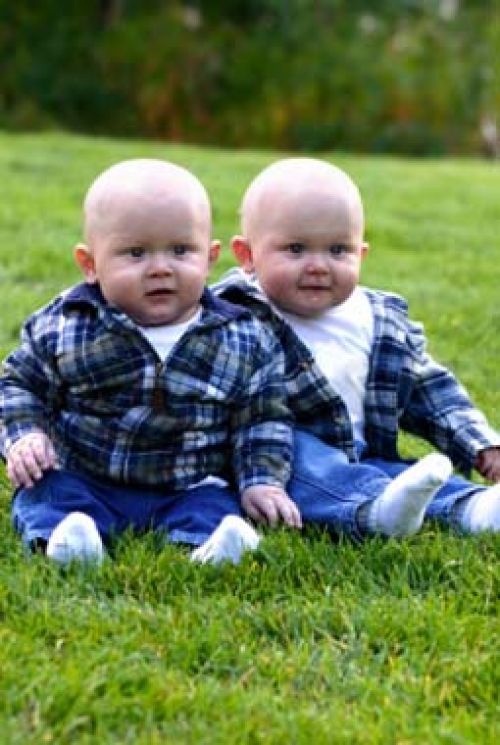 Autosomes are paired chromosomes that are the same in the male and female body. In other words, these are all chromosomes, except for the sex chromosomes (X- and Y-chromosomes). In the process of sexual cell division (meiosis), chromosomes form pairs and exchange homologous regions (recombine). In the process of recombination, chromosomes exchange allelic variants of polymorphic loci, that is, gene variants. It is the recombined chromosomes with "shuffled" alleles that make up the genetic material of germ cells. Moreover, each sex cell has its own unique set of genes ("deck of cards" in this case consists of 25,000 genes). Thus, nature provides material for natural selection and creates even in a large family children who are not similar to each other. Since identical twins are formed from one egg fertilized by one sperm, the genetic material is identical. Fraternal twins are formed from two eggs and two sperm, so their genetic material is very different from each other.
Autosomes are paired chromosomes that are the same in the male and female body. In other words, these are all chromosomes, except for the sex chromosomes (X- and Y-chromosomes). In the process of sexual cell division (meiosis), chromosomes form pairs and exchange homologous regions (recombine). In the process of recombination, chromosomes exchange allelic variants of polymorphic loci, that is, gene variants. It is the recombined chromosomes with "shuffled" alleles that make up the genetic material of germ cells. Moreover, each sex cell has its own unique set of genes ("deck of cards" in this case consists of 25,000 genes). Thus, nature provides material for natural selection and creates even in a large family children who are not similar to each other. Since identical twins are formed from one egg fertilized by one sperm, the genetic material is identical. Fraternal twins are formed from two eggs and two sperm, so their genetic material is very different from each other.
As mentioned above, when genetic examination of twins is carried out, the only system of genetic markers is autosomal polymorphic DNA loci. When analyzed, all polymorphic loci of identical twins show the same alleles, while alleles of identical twins will be different (Figure 2).
When analyzed, all polymorphic loci of identical twins show the same alleles, while alleles of identical twins will be different (Figure 2).
Figure 2. The principle of determining identical and fraternal twins. Different colors and letters show different alleles of the same locus.
Therefore, the task of genetic examination of twins is to analyze the allelic variants of polymorphic loci and determine whether they are the same (homozygous) or different (heterozygous). To do this, biological material sent for genetic examination is subjected to several stages of analysis:
- extraction of DNA from biological material. The process of extracting DNA from cells is very important and time-consuming. At this stage, it is critical that DNA molecules from the environment do not get into the test tube with biological material (for example, house dust includes dead and exfoliated skin cells and hair particles). Therefore, DNA extraction takes place in especially clean rooms and in special laboratory boxes;
- , at the next stage of the analysis, the number of studied autosomal polymorphic loci increases with the simultaneous inclusion of a fluorescent label in each copy of the locus.
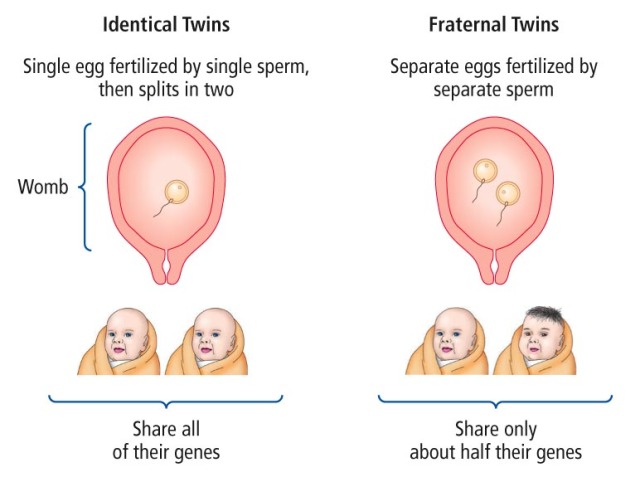 This is done using the polymerase chain reaction (PCR) method. Today, the PCR reaction is used in a variety of molecular biotechnological methods: for example, DNA sequencing, cloning, directed mutagenesis, diagnosis of hereditary diseases, in all of the above methods for analyzing genetic markers, and so on. At 19In 83, this reaction was invented by the American biochemist Kary Mullis, for which he was awarded the Nobel Prize in 1993;
This is done using the polymerase chain reaction (PCR) method. Today, the PCR reaction is used in a variety of molecular biotechnological methods: for example, DNA sequencing, cloning, directed mutagenesis, diagnosis of hereditary diseases, in all of the above methods for analyzing genetic markers, and so on. At 19In 83, this reaction was invented by the American biochemist Kary Mullis, for which he was awarded the Nobel Prize in 1993; - at the final stage, the resulting mixture of DNA molecules is analyzed. To do this, molecules of different lengths are separated in a porous agarose gel under the action of an electric field. Separated DNA fragments labeled with a fluorescent label are read by a laser, and their length is automatically entered into a computer. Comparing the obtained results with each other, as well as with a standard genetic marker, the expert geneticist determines the degree of their agreement or difference. This point in the analysis of the coincidence or mismatch of DNA allelic profiles is carried out in accordance with Art.
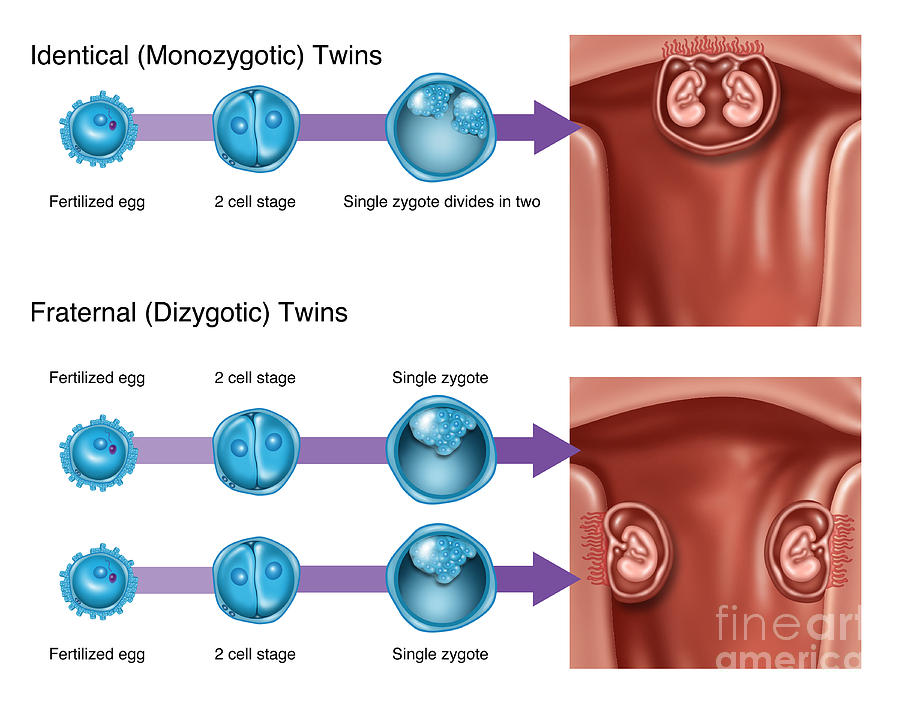 3.4 Guidelines of the Ministry of Health of the Russian Federation No. 98/253 dated January 19, 1999 "The use of individualizing systems based on amplified DNA fragment length polymorphism (AFLP) in forensic medical examination of personality identification and establishing kinship."
3.4 Guidelines of the Ministry of Health of the Russian Federation No. 98/253 dated January 19, 1999 "The use of individualizing systems based on amplified DNA fragment length polymorphism (AFLP) in forensic medical examination of personality identification and establishing kinship."
The accuracy of the results of the genetic examination of twins, confirming the identity, is 99.99%, refuting - 100%.
Regulatory documents that determine the procedure for conducting a genetic examination of twins in the Russian Federation:
- Federal Law of May 31, 2001 No. 73-FZ "On State Forensic Activities in the Russian Federation";
- Order of the Ministry of Health and Social Development of the Russian Federation No. 346n dated May 12, 2010 "On approval of the Procedure for organizing and conducting forensic medical examinations";
- Guidelines of the Ministry of Health of the Russian Federation No. 98/253 dated January 19, 1999 "The use of individualizing systems based on amplified DNA fragment length polymorphism (AFLP) in forensic medical examination of personality identification and establishing kinship.
 "
"
According to the Decree of the Plenum of the Supreme Court of the Russian Federation of December 21, 2010 N 28 "On judicial expertise in criminal cases" expertise in a criminal case can be carried out either by the state an expert institution, or a non-profit organization established in accordance with the Civil Code of the Russian Federation and the Federal Law "On non-profit organizations", carrying out forensic activities in accordance with the statutes adopted by them.
Commercial organizations and laboratories, individual entrepreneurs, educational institutions, as well as non-profit organizations for which expert activity is not statutory, do not have the right conduct a criminal investigation. Expertise prepared by these organizations within the framework of criminal process, may be recognized as inadmissible evidence, i.e. evidence obtained from violation of the requirements of the procedural law.
Inadmissible evidence may not be used in the process of proof, including examination or be announced at the court session, and are subject to exclusion from the materials of the criminal case.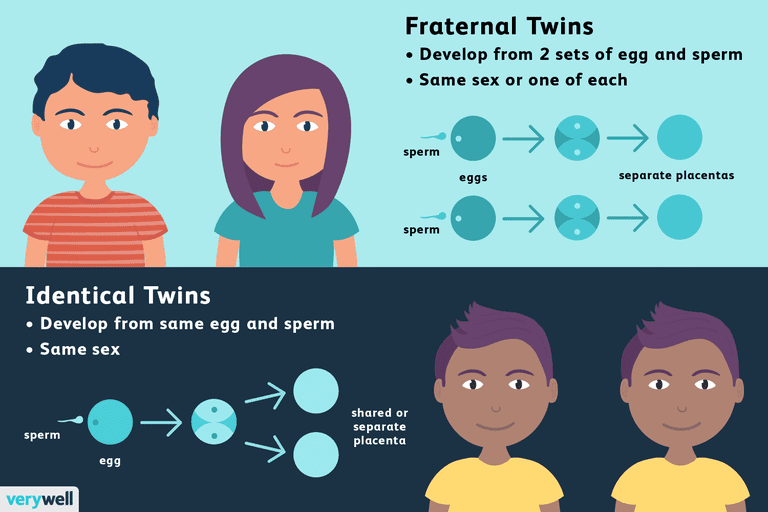
Since ANO "Forensic Expert" is an autonomous non-profit organization , and conducting judicial expertise is its main statutory activity (see section "Documents organization"), then it has the right to conduct examinations, including in criminal cases.
The rarest semi-identical twins were born in Australia
Photo copyright, Queensland University of Technology
Photo caption,If one egg is fertilized by two sperm cells, a triploid can be formed that has three sets of chromosomes instead of the usual two.
A boy and a girl, born four years ago in Australia, are identical twins on their mother's side. This case is reported in The New England Journal of Medicine.
- Two in one body. The story of Siamese twins
- Medical myths: the ability to roll the tongue into a tube - is it genes?
- In Vietnam, a woman gave birth to twins from different fathers
However, they share only part of their father's DNA, which, from the point of view of genetics, makes them intermediate between monozygotic (identical) and dizygotic (non-identical) twins.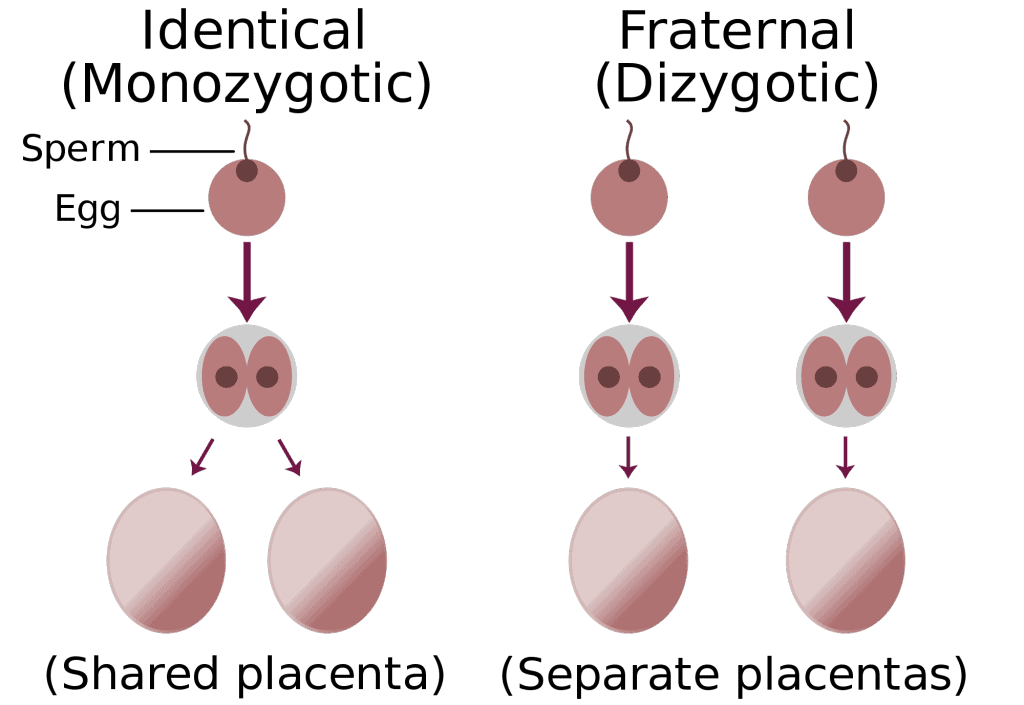
According to experts, this type is extremely rare - usually such embryos do not survive.
Professor Nicholas Fisk, who led a team looking after the mother and twins at the Royal Women's Hospital Brisbane in Australia in 2014, said the discovery was made during a routine pregnancy scan.
For the first time such twins were discovered before birth. Their mother, who was 28 years old, had not previously had a pregnancy and conceived naturally.
"An ultrasound of the mother after six weeks of pregnancy showed a single placenta and a characteristic arrangement of the amniotic sacs, which indicated the presence of identical twins," says Professor Fisk.
"However, an ultrasound performed after 14 weeks of pregnancy revealed that the twins were a boy and a girl, which is impossible with the identity."
How could this happen?
Skip the Podcast and continue reading.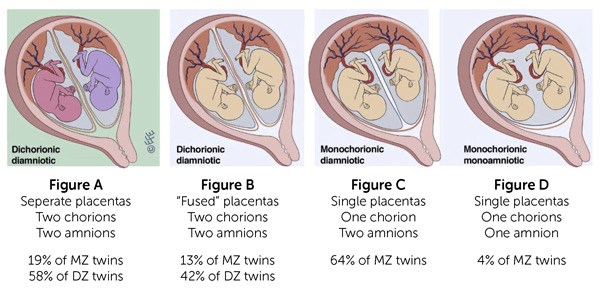
Podcast
What was that?
We quickly, simply and clearly explain what happened, why it's important and what's next.
episodes
End of Story Podcast
Monozygotic (also called identical or homozygous) identical twins are formed from one zygote (one egg fertilized by one sperm), divided into two or more parts during the cleavage stage. They have the same genotypes.
Monozygotic identical twins are always of the same sex and have a very large portrait resemblance. Among monozygotic twins, there is often a great similarity in characters, habits, and even biographies.
Heterozygous (non-identical) twins develop when two eggs are fertilized by two sperm. Heterozygous twins have different genotypes. They are no more similar to each other than brothers and sisters, since they have about 50% of identical genes.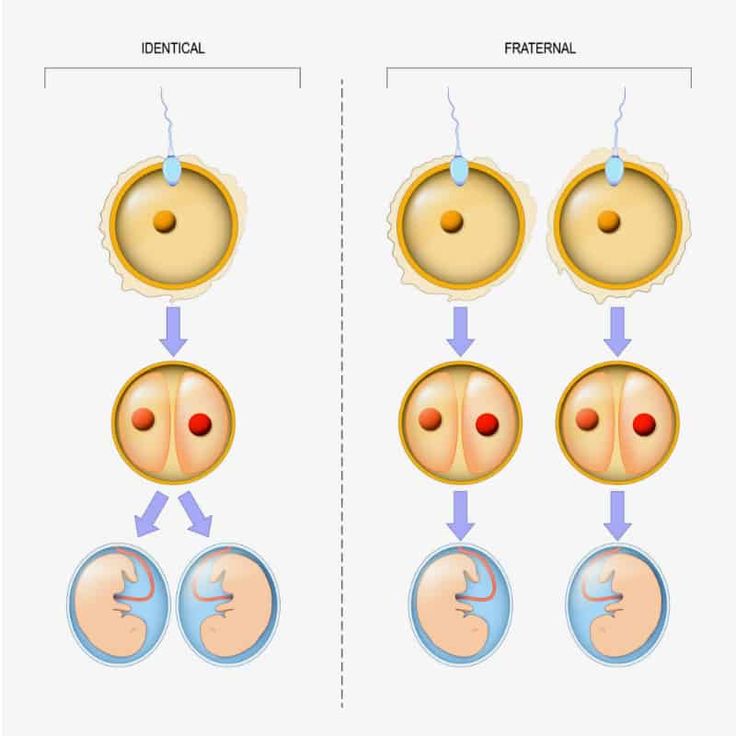 Interestingly, in rare cases, heterozygous twins can be born from different fathers. Sometimes heterozygous twins share a fused placenta.
Interestingly, in rare cases, heterozygous twins can be born from different fathers. Sometimes heterozygous twins share a fused placenta.
In this case of semi-identical twins, the egg was probably fertilized by two sperm at the same time before it split.
If one egg is fertilized by two sperm cells, a triploid is formed instead of the usual diploid, having three sets of chromosomes instead of the usual two - one from the mother and two from the father.
According to scientists, three sets of chromosomes are incompatible with life and such embryos usually die in the early stages of development.
Semi-identical twins are not named.
Why are twins born?
Image copyright Getty Images
Non-identical twins are more common in families that have had twins before. They appear more often in late-born mothers, since they often have several eggs at the same time during the process of ovulation.